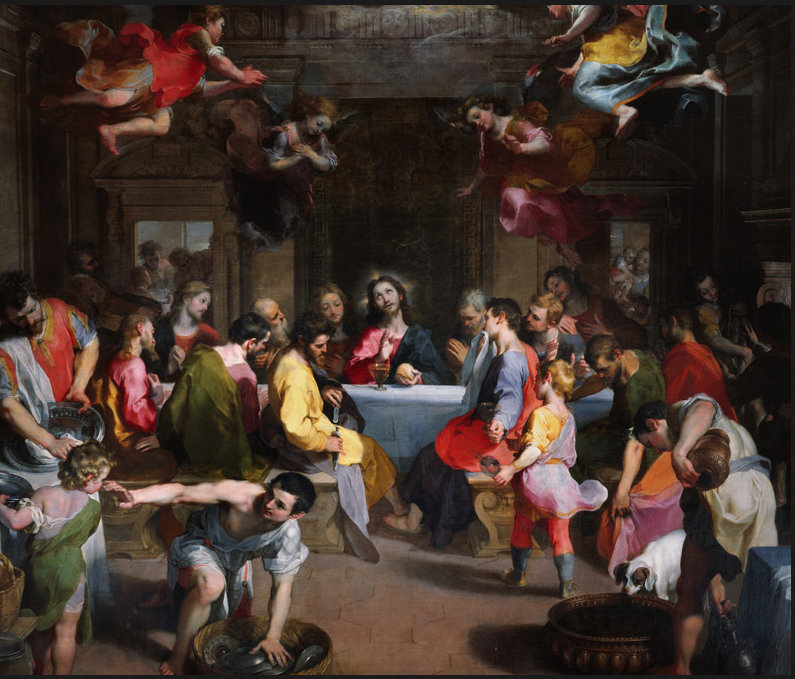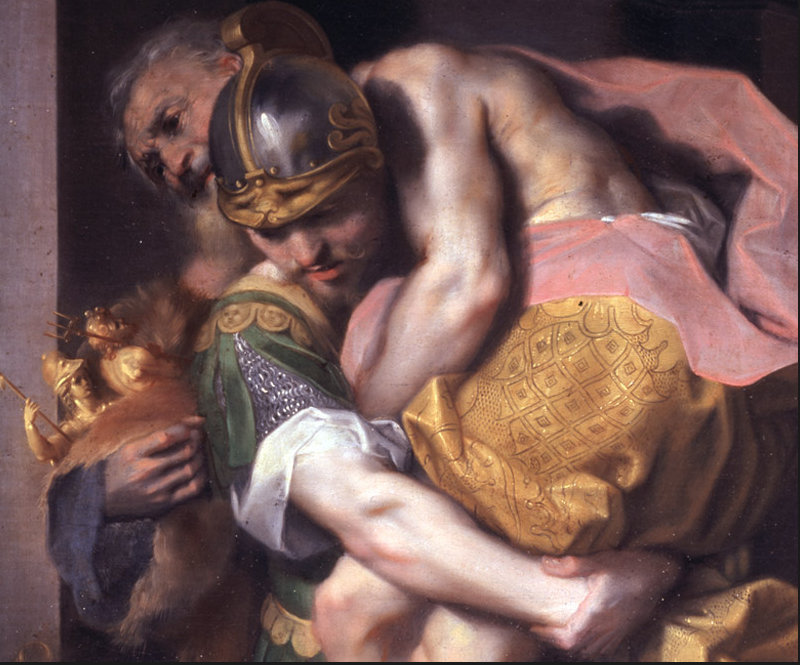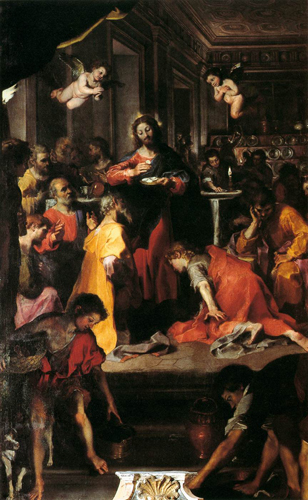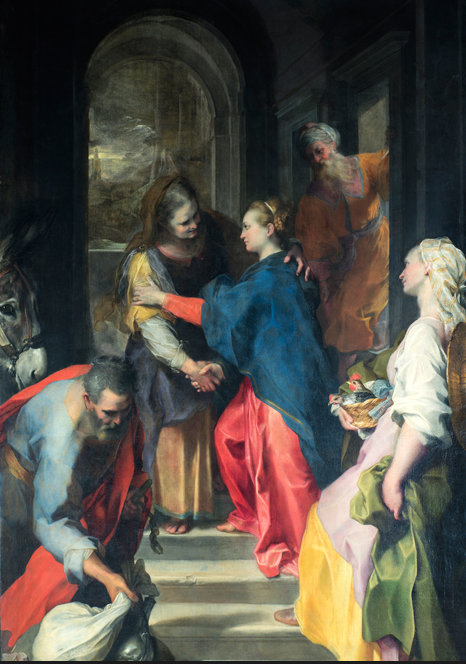Barocci: Brilliance and Grace
Piers Baker-Bates
Barocci: Brilliance and Grace until 19th May, National Gallery London 27 February–19 May 2013
Barocci: Brilliance and Grace is one of the most stimulating and well curated exhibitions to be held in London in recent years. There is in fact a relative wealth of religious art exhibitions in London currently, the equally excellent Murillo & Justino de Neve: the art of friendship is on show at the Dulwich Picture Gallery. Taken together, these exhibitions offer a perspective on early modern religious art that in unusual in England. Furthermore, like the earlier Sacred Made Real exhibition, Barocci has proved a sleeper success and, while visitors are not queuing around the block as they were for Leonardo, the public is coming in a steady stream to view this previously most neglected of artists. Symptomatic of this is that only one of Barocci’s paintings, the Madonna del Gatto, is in an English collection (in the National Gallery itself) and, as the catalogue makes clear, has frequently been treated with disdain.
There has been an efflorescence of scholarship on Barocci in the last fifteen years but this has not until now been matched by an equivalent public profile. This exhibition, which has come to London from Saint Louis, will hopefully change that. One of the problems of course has been that so many of Barocci’s greatest paintings remain in situ, a handicap which the London exhibition overcomes triumphantly with loans from many different Italian sources, notably Urbino and Rome. Out of an exiguous output, this exhibition includes some fifteen paintings, so about a quarter of Barocci’s entire oeuvre, among them some of his most significant works. It is unlikely that there will be a similar exhibition where it is possible to evaluate and appreciate Barocci as an artist for many years which means that the National Gallery exhibition is a must see on anyone’s London itinerary. It becomes clear that Barocci is the missing link that joins the Renaissance to the Baroque, both looking back to the art of Raphael and his circle and forward to that of the Carracci.

Fig. 1 Federico Barocci, 'Last Supper', 1590-9. Chapel of the Santissimo Sacramento, Cathedral, Urbino.
As with the Leonardo show, drawings and paintings are placed side by side here so that Barocci’s painstaking working process can be studied next to the finished result. The drawings are only a small part of his surviving output, as Barocci has one of the largest surviving graphic oeuvre of any artist, and have been chosen with care as to quality and relevance. The care with which he approached every individual detail is made manifest, as well as the variety of his practice from quick sketches to fully worked up and meticulously rendered studies of heads. Moreover, significant paintings that are too fragile to travel are brought to life through the skilful inclusion of key drawings, as with Il Perdono (the Forgiveness of St Francis in Assisi) from the Franciscan church in Urbino.
Religion was mentioned in the opening paragraph and that is the second theme that this exhibition develops. While it is the distinctiveness of Barocci’s style that is immediately apparent on entering the exhibition, his art was also perfectly adapted to the tenets of the Counter-Reformation. Much of his subject matter, such as Il Perdono is central to the doctrinal orthodoxy disseminated after the Council of Trent. The drawings for the Insititution of the Eucharist show the actual changes to the design made at the insistence of the patron, Pope Clement VIII. The National Gallery concurrently organised a panel discussion entitled ‘Decorum and Originality’, on the subject of Barocci as a religious artist.
The centrepiece of the exhibition, both physically and conceptually, is the long room at the centre of the Galleries where four of Barocci great late paintings can be appreciated alongside each other, namely the Last Supper from the Cathedral in Urbino (Fig. 1), this Institution of the Eucharist from the Roman Church of Santa Maria sopra Minerva (Fig. 2) and Aeneas’ Flight from Troy from the Borghese Gallery (Fig. 3). The last two paintings show how Barocci’s reputation by the end of his life extended throughout Italy and his works were in demand by leading cardinals, and the pope himself. In addition to their religious dimension these works participated in the skilful cultural politics conducted by the Della Rovere dukes of Urbino towards their nominal overlords.
The following room is almost as overwhelming. In an unusual but highly successful move a single room is dedicated to one painting, the Visitation from the Roman Church of Santa Maria in Vallicella (Fig. 4), and its attendant drawings. The well known story is that San Filippo Neri sat in front of this painting for hours lost in contemplation and visitors to this exhibition have been repeating precisely that experience for themselves. The Visitation is perhaps the single most striking painting in the exhibition and, removed from its usual dim chapel, the true quality can be appreciated at close range. The exhibition then closes with a room of portraits, not a genre with which Baroccci is normally associated. His great patron, Francesco Maria II della Rovere, dominates the room and the sitter’s intelligence and humanity is brought vividly to life. These portraits make a good point to end; they show the breadth of this and intelligence of this exhibition’s coverage of Barocci. All praise to the National Gallery for putting on such a dramatic and intellectually challenging exhibition in the current dire climate for the arts in England.



